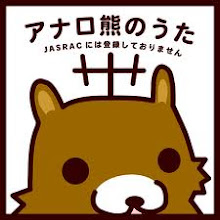CIR interview (JET) pt1

this place?
this is shinjuku in tokyo, where, if you're "lucky", you'll be spending a few days come next summer.
there are a lot of sites that give information on acing an ALT JET interview. however, what you must remember is that every interview is different and every consulate is different.
my former japanese teacher used to do the CIR interview in new york. when she was doing interviews, everything was conducted in japanese and the interviewers were all japanese.
other people i've talked to tend to have 3 interviews, of which one is japanese.
so. let's get started. (please keep in mind that, again, NO INTERVIEW IS THE SAME!)
1. Clothing
first of all, this is a professional interview, and you should be dressed professionally.
that means a suit.
if you don't have a suit either buy one or borrow one from a family member or friend.
i remember seeing women's suit sets at sears for about $30. (may have gone up in price)
heck, i know that second-hand stores like value village sell used suit sets (probably $10 and up). everyone needs a suit at some point, so, just get over it and buy one.
and for the love of god, buy something that FITS!
when you go into this interview, your clothing should be clean (it goes without saying, but still).
jewelry should be kept to a minimum. that means, for girls, earrings (if your ears are pierced), a necklace (nothing huge, and nothing garish), and a ring.
if you have more than 2 piercings in your ears, i would recommend keeping the earrings small. like studs.
if you have a nose piercing, it would probably be best to take it out.
please do not wear a shirt that shows your bra. if you can see your bra through your shirt, put on an undershirt.
do not wear jeans, wrinkled clothing, smelly clothing, print shirts, t-shirts.
2. The Interview
when you go to your japanese teacher's office, how do you enter the room?
do you knock and say "shitsureishimasu"?
that is the correct way to enter the room.
you will probably be escorted into the room. when you reach the door, stop, say "shitsureishimasu", bow and then enter and take your seat.
the interviewers will then probably introduce themselves.
next, you will be asked to read a passage in japanese. this is where your test of japanese comes in.
when you are handed the paper, read it. now, many...most people will say that they read the paper out loud in japanese. but, i would suggest reading it out loud if you are asked.
if you're not asked...then don't. (asking for clarification is fine too! "shall i read this silently or out loud?")
a. what kind of japanese should i use???
if you are most comfortable with desu/masu, use it. if you have no problem with keigo, feel free to use that, too.
however! don't force keigo. it's better to speak with desu/masu than to stumble over keigo.
after finishing the first reading, you'll be asked a few questions in japanese.
you are allowed to look at the sheet if need be.
typically, the first reading is "easy" with furigana above the kanji, and a "light" topic.
the second reading will be a bit harder in the sense that it has no furigana and may be related to a social issue. (environment, low birth rates, etc)
again, the japanese interviewer will ask you questions about the text, and questions related to the text.
depending on where you are, this is where your use of japanese will end and a switch to english will begin.
(to be continued...)



